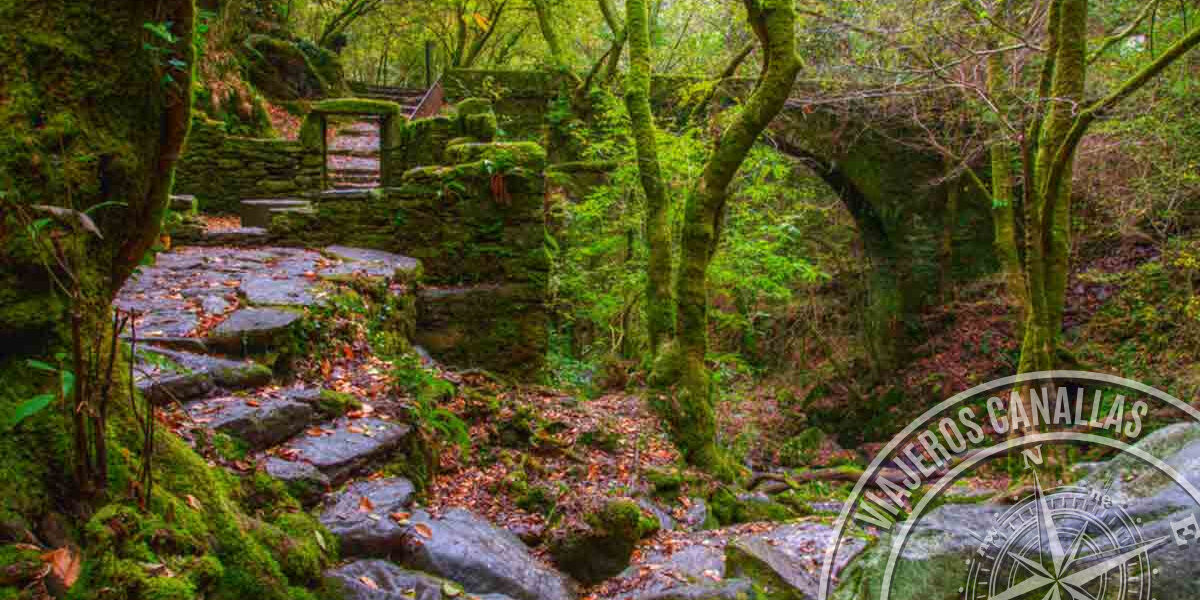We tell you some of Galicia's secrets through its traditions and legends.
Galician traditions and legends, as a good "Terra Meiga", is a magical place full of customs and stories of traditions and legends passed down from generation to generation. From the stories of meigas and goblins to the ancestral festivities, we will discover the charm and magic of Galicia.
The meigas: witches and sorceresses of Galician nightlife
Surely you have heard the expression "eu non creo nas meigas mais habelas hainas" which means "I don't believe in witches but there are witches". Galician meigas are iconic figures of Galician folklore and mythology. Some people make a difference between meigas and bruxas.
On the one hand, the term meigas was associated with those who did evil to other people and who could make pacts with the devil, while the term bruxa was used with those women who had magical powers and were able to remove the evil eye and evil spells. In other words, they could serve either good or evil. As a curiosity, the ritual of the Conxuro de la Queimada is created to scare away the meigas.
In short, the Galician meigas are an essential part of Galicia's cultural legacy. These figures continue to be a living part of Galician culture and their presence continues to fascinate Galicians themselves and visitors.
Transnos: pranks and traps
These mythical creatures have captivated generations with their mischief and their ability to play with humans. They are considered mischievous goblins that inhabit the homes and forests of Galicia. Although their appearance may vary according to different stories, they are usually described as small, scruffy-looking beings with a mischievous smile.
Some of their pranks include hiding objects, moving things around, making mysterious noises or causing minor household damage. Despite their mischief and pranks, they are not dangerous or malicious. They are also associated with nature and are believed to help protect crops and animals.
They are attributed with the power to watch over and care for the treasures hidden in the natural environment. In Galician culture they have become endearing and captivating characters, leaving a great mark.

The mouras
They are beautiful enchanted princesses who live in the mountains and springs of Galicia, underground or underwater, although some of them also lived in deposits. They are surrounded by stories of love, deception and redemption. They were often imperceptible to the human eye. They sat on the banks of rivers and springs to wash, weave, spin and promise treasure and fortune to whoever broke their spell. Legend has it that if a man sees them he is seduced by them and the only way for her to fall in love with him is to break the moura's spell by kissing her or performing some ritual she commands. If he breaks it, he will be able to marry the moura.

Ancestral rites and festivities
Galicia is full of ancestral festivities and traditions that are still alive today.
The Entroido (Galician Carnival) is of special importance in three places in Galicia: Verín, Xinzo de Limia and Laza, considered the "maximum triangle" of the Entroido, which stand out for their unique and tradition-filled celebrations. Each has its own particularities and emblematic characters that make their festivities a special and fun-filled experience.
On the other hand, A Rapa das Bestas also has a great tradition. It consists of cutting the manes of purebred Galician horses, although nowadays it is also performed with mestizo horses. It takes place in several towns in Galicia in an enclosed area where the horses are also treated for possible injuries and wormed.
The night of San Juan is a deep-rooted tradition in Galicia that is celebrated on the night of 23rd to 24th June, when the traditional bonfires take place. Its purpose was to purify and protect people from all evils. Another tradition was to put aromatic herbs and flowers that had been collected in the previous days in a container with water and leave it at the door of the house. The next day they had to wash their faces with this mixture in order to cure any illness.
There was also the custom of making the famous Queimada, a drink based on brandy, sugar and coffee beans. While the alcohol burns and until it is extinguished, the traditional incantation is performed.

Sanctuaries and magical places
We delve into the sanctuaries and sacred places of Galicia where the divine and the profane intertwine. From the Sanctuary of Nosa Señora da Barca to the Castro de Baroña, these enigmatic places have been the object of worship and veneration throughout the centuries.
The Sanctuary of Nosa Señora da Barca is a place of great religious and cultural importance located in Muxía; it is dedicated to the Virgin Mary because, according to tradition, a stone boat arrived on these coasts to encourage the St. James the Apostle on their pilgrimage.
The Baroña Hillfort is a Celtic settlement located in Porto do Son and is one of the most impressive and most important hillforts in the area. best preserved in Galicia. It is a popular destination for archaeology lovers and for those wishing to explore the history and heritage of Galicia.
Conclusions
These are just a few examples of Galician ancestral rites that have endured over time and are still celebrated today. These traditions not only keep Galician culture and identity alive, but also connect people to their history, their natural environment and their spirituality.
